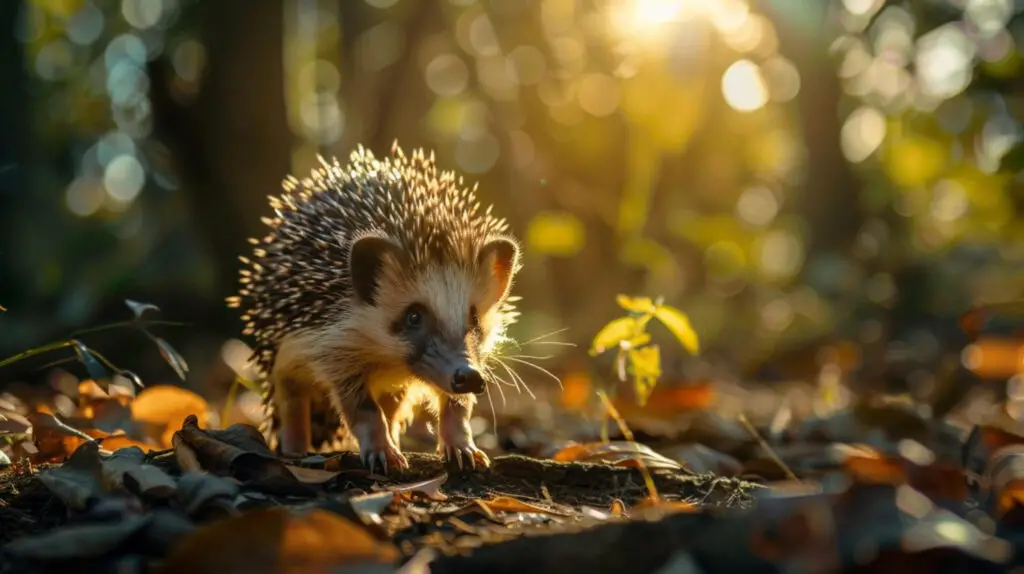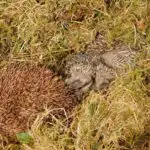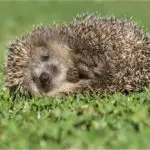
Discover the unique traits and lifestyles of tenrecs and hedgehogs in this insightful comparison!
Quick Answer: Tenrecs and hedgehogs differ in family classification, physical traits, habitat preferences, and social behaviors, despite both being spiny insectivores.
Key Takeaways:
- Tenrecs and hedgehogs, although both spiny insectivores, belong to different families and have distinct evolutionary paths; tenrecs are diverse with over 30 species in Madagascar, while hedgehogs have around 17 species across Europe, Asia, and Africa.
- Hedgehogs are known for their ability to roll into a ball as a defense mechanism, a trait not shared by tenrecs, which vary greatly in size, and appearance, and do not roll up; both have adapted to their environments with specific features like hedgehogs’ strong legs and some tenrecs’ webbed feet.
- While both tenrecs and hedgehogs face habitat loss due to human activities, their conservation statuses vary, with some species endangered; they have different health concerns and lifespans, with hedgehogs living 2-5 years in the wild and tenrecs potentially reaching up to 10 years.
Defining Tenrecs and Hedgehogs
When you look at a tenrec and a hedgehog, you might think they’re close relatives. They’re both small, cute, and covered in spines. But these two creatures are more like distant cousins than siblings. Tenrecs hail from the family Tenrecidae, while hedgehogs belong to Erinaceidae. Both are insectivorous mammals, which means they love to munch on insects. But that’s where the similarities end.
Tenrecs are a diverse bunch, with over 30 species calling the family home. They’ve adapted to a variety of habitats, from the rainforests to the deserts of Madagascar. Hedgehogs, on the other hand, are less varied, with about 17 species spread across Europe, Asia, and Africa. Despite their spiky exteriors, these two groups of animals have taken different evolutionary paths, which is why they look similar but are quite different.
Origins and Species Overview
Tenrecs are primarily found in Madagascar, a biodiversity hotspot. They’ve evolved in isolation on the island, giving rise to a fascinating range of species. Each has adapted to its own ecological niche, from the water-loving web-footed tenrec to the highland-dwelling streaked tenrec.
Hedgehogs have a more widespread presence. They roam across parts of Europe, Asia, and Africa, each species adapting to its environment in its own way. The common hedgehog, for example, is well-suited to the European countryside, while the long-eared hedgehog thrives in the deserts of Asia.
The biodiversity within each family is remarkable. Hedgehogs tend to be more uniform in appearance, but tenrecs can look vastly different from one another. Some tenrecs don’t even have spines, while others have a full coat of them, just like hedgehogs.
Physical Appearance and Distinct Features
Let’s talk about looks. Hedgehogs are the stars when it comes to spiny coats. They’re known for their ability to roll into a tight ball, with spines sticking out to deter predators. This defense mechanism is unique to hedgehogs among these two families. They’re generally small, with a brown or grey coloration that helps them blend into their surroundings.
Tenrecs, however, are a bit more complicated. They come in various shapes and sizes, with some resembling shrews or otters more than their spiky counterparts. Their spines and quills can be soft or stiff, and they don’t roll up like hedgehogs. Instead, some tenrecs might raise their quills in defense, but that’s as far as the similarity goes.
When it comes to size, hedgehogs are usually consistent, fitting snugly in your hand. Tenrecs can range from the size of a mouse to as big as a rabbit. Their coloration also varies widely, from dark browns to light greys, and some even sport stripes or spots.
Both animals have adaptations that suit their lifestyles. Hedgehogs have strong legs for digging and running, while some tenrecs have webbed feet for swimming. It’s these little differences that highlight the diversity of life and how each creature has carved out its place in the world.
Habitat and Environmental Adaptations
Exploring the natural homes of tenrecs and hedgehogs reveals a fascinating study in survival and adaptation. Hedgehogs are versatile creatures found in a variety of settings, from forests to deserts. They’ve mastered the art of living in places that range from dry and sandy to lush and green. Tenrecs, however, are more specialized. They thrive in the tropical environments of Madagascar, where humidity and warmth are the norms.
Hedgehogs have a nifty trick for dealing with threats in their more open habitats: they curl into a tight ball, with spines out, deterring many would-be predators. Tenrecs, on the other hand, often retreat to burrows on the dense forest floor, using the earth itself as a shield.
Native Habitats and Geographic Distribution
The world map of these small mammals is dotted with their preferred locales. Hedgehogs are no strangers to meadows, woodlands, and even suburban gardens, where they play the role of a gardener’s friend by munching on pests. Tenrecs are more likely to be found in the wet forests and brushlands of Madagascar, their exclusive home.
The climate plays a big part in where these animals live and how they live. Hedgehogs might move around to find food or a mate, but they don’t typically migrate. Tenrecs are also stay-at-homes, sticking to their lush, green corners of the world.
Climatic Tolerance and Shelter Preferences
Both tenrecs and hedgehogs have adapted to their climates in unique ways. Hedgehogs can handle a range of temperatures and will hunker down in burrows or nests made of leaves and grass to stay cozy. When the cold hits, some hedgehog species go into hibernation to conserve energy.
Tenrecs, preferring stable tropical temperatures, use tree hollows or underground burrows to regulate their body temperature and moisture levels. Some tenrecs will enter a state of estivation during dry periods, a sort of summer hibernation, to survive until conditions improve.
Impact of Human Activity on Habitats
Human expansion has not been kind to the homes of these small mammals. Urbanization, agriculture, and deforestation have all played a part in changing the landscapes tenrecs and hedgehogs once roamed freely. This has led to habitat loss and fragmentation, which can be detrimental to their populations.
Conservation efforts are crucial in ensuring these creatures continue to thrive. Protecting their natural environments from further damage is key. In some cases, human activity has even led to certain species becoming invasive in areas outside their native range, upsetting local ecosystems.
The differences between tenrecs and hedgehogs extend far beyond their physical appearance. Their habitats, adaptations, and the challenges they face in a rapidly changing world are all part of the intricate tapestry that defines their existence. Understanding these aspects is essential in appreciating the diversity of life and the resilience of these remarkable creatures.
Diet and Foraging Behaviors
Tenrecs and hedgehogs share a common trait as insectivores, playing a pivotal role in maintaining ecosystem balance. These small mammals are adept at controlling insect populations, which benefits both their natural habitats and human interests. Their diets, however, extend beyond just insects, and their foraging behaviors are finely tuned to the availability of food in their respective environments.
Typical Diets and Food Sources
The diets of tenrecs and hedgehogs are diverse, including a variety of insects, fruits, fungi, and occasionally small vertebrates. The specific food items consumed can vary greatly depending on the species and their natural habitat.
- Hedgehogs often eat earthworms, beetles, and caterpillars.
- Tenrecs, particularly those in Madagascar, may consume a wider range of tropical insects and fruits.
Both animals have developed foraging strategies and feeding adaptations to secure their meals. Hedgehogs, for instance, have strong digging claws that allow them to unearth insects and larvae. Some tenrecs have elongated snouts and long tongues to extract invertebrates from crevices.
Foraging Strategies and Feeding Habits
Tenrecs and hedgehogs are mostly nocturnal hunters, using their keen sense of smell and hearing to locate prey. Their nightly quests for food take them through various terrains, from the forest floor to garden beds.
- Hedgehogs have a great sense of hearing and smell to detect food underground.
- Tenrecs use their sensitive whiskers to navigate and find food in the dark.
Seasonality and habitat type play significant roles in shaping their feeding habits. During colder months, hedgehogs may rely more on their fat reserves, as food becomes scarce. Tenrecs in the dry forests of Madagascar may change their diet based on fruit availability.
These foraging behaviors not only fulfill their dietary needs but also contribute to controlling insect populations, which can prevent the spread of pests and diseases.
Nutritional Needs and Dietary Restrictions
The nutritional needs of tenrecs and hedgehogs are quite specific, requiring a balance of proteins, fats, and carbohydrates. In the wild, their diets naturally provide this balance, but in captivity, it’s essential to replicate this as closely as possible.
- Hedgehogs can be prone to obesity if fed a diet too high in fats.
- Tenrecs may have unique dietary needs based on their species and natural diet.
Captive care for these animals should take into account their natural dietary preferences and restrictions, such as lactose intolerance. A diet for captive hedgehogs should include:
- Insect-based proteins, like mealworms or crickets.
- A mix of fruits and vegetables to provide necessary vitamins and minerals.
- Limited treats to prevent weight gain.
Understanding the dietary needs and foraging behaviors of tenrecs and hedgehogs is crucial for their conservation and care. By respecting their roles as insectivores and their contributions to ecological balance, we can better appreciate the differences and similarities between these fascinating creatures.
Social and Reproductive Behaviors
Understanding the social and reproductive behaviors of tenrecs and hedgehogs sheds light on their distinct lifestyles. While both may appear similar at a glance, their interactions and mating rituals are quite diverse. These behaviors are not only fascinating but also crucial for the survival of their species.
Mating Rituals and Breeding Seasons
The mating rituals and breeding seasons of tenrecs and hedgehogs are timed with environmental cues like climate and food availability. Hedgehogs typically breed once or twice a year, with a gestation period of about 35 days. Tenrecs, particularly those in Madagascar, may have more variable breeding times due to the island’s unique climate.
- Hedgehogs use a variety of mating calls and displays to attract mates.
- Tenrecs may engage in less conspicuous courtship behaviors.
The litter sizes can also vary, with hedgehogs usually having 4 to 7 young, while some tenrecs can have up to 20 in a single litter. These differences in reproductive strategies reflect the animals’ adaptation to their environments.
Social Hierarchies and Interaction
Tenrecs and hedgehogs differ significantly in their social dynamics. Most hedgehogs lead solitary lives, coming together only to mate. They can be quite territorial, especially males during the breeding season. Tenrecs’ social structures are less understood, but some species exhibit communal nesting behaviors, which suggests a more complex social life.
- Hedgehogs are known to be solitary and may only interact during mating.
- Some tenrec species may share foraging areas or nest sites.
Territorial disputes can occur in both tenrecs and hedgehogs, but the nature and frequency of these disputes can vary widely among species. Such behaviors are essential for securing resources and mates, which are critical for their survival and reproductive success.
Parenting Styles and Offspring Care
The care of young is where tenrecs and hedgehogs show some of their most endearing behaviors. Hedgehog mothers are solely responsible for the care of their offspring, which are born blind and helpless. The mother will nurse, protect, and teach her young until they are ready to fend for themselves.
- Hedgehog mothers build nests to protect their young.
- Tenrecs may have different parenting styles, with some species showing more communal care.
The development stages of the young are critical, and both tenrecs and hedgehogs have adapted parenting styles to ensure the highest survival rate. Learning essential skills like foraging is a vital part of their development, and in this, too, each species has its unique approach.
By examining the social and reproductive behaviors of tenrecs and hedgehogs, we gain insight into their complex lives. These behaviors are not just interesting quirks of nature; they are the means by which these animals ensure the continuation of their species.
Health, Lifespan, and Conservation Status
When it comes to health, lifespan, and conservation status, tenrecs and hedgehogs face different challenges. These factors are critical in understanding their place in the ecosystem and the urgency of conservation efforts needed to ensure their survival.
Common Health Concerns and Diseases
Both tenrecs and hedgehogs can suffer from a range of health issues. Parasites such as ticks and fleas are common, as are respiratory infections. Hedgehogs, in particular, can struggle with obesity when kept as pets due to improper diets. These health concerns can significantly affect their quality of life and reduce their lifespan.
Preventative care, including regular health checks and maintaining a clean living environment, is essential. It’s also important to be aware of zoonotic diseases – illnesses that can be transmitted from animals to humans. Proper hygiene is crucial when handling these animals to prevent the spread of such diseases.
Lifespan Expectancy in the Wild and in Captivity
In the wild, hedgehogs have an average lifespan of 2-5 years, while tenrecs can live slightly longer, with some species reaching up to 10 years. Factors such as predation, environmental stressors, and availability of food play a significant role in their longevity.
In captivity, with the absence of predators and controlled diets, both tenrecs and hedgehogs can live longer than they typically would in the wild. However, captive care brings its own set of ethical considerations. Providing a stimulating environment that mimics their natural habitat is essential for their well-being.
Conservation Efforts and Protective Measures
The conservation status of tenrecs and hedgehogs varies by species. Some are classified as vulnerable or endangered due to habitat loss, climate change, and in some regions, hunting. Conservation efforts are in place to protect these species, including habitat restoration and legal protection.
Wildlife organizations play a pivotal role in these conservation efforts, working to mitigate threats such as habitat destruction and the impacts of climate change. Individuals can contribute by supporting these organizations, participating in conservation programs, and advocating for policies that protect natural habitats.
Understanding the health, lifespan, and conservation status of tenrecs and hedgehogs is crucial in appreciating their differences and the specific needs required to ensure their continued existence in the wild.
Frequently Asked Questions
Question 1:
Can tenrecs and hedgehogs interbreed? Answer: No, tenrecs and hedgehogs cannot interbreed as they are different species from separate families.
Question 2:
Do tenrecs and hedgehogs have similar predators? Answer: Yes, both face predation from birds of prey, carnivorous mammals, and snakes, depending on their geographic location.
Question 3:
Are tenrecs or hedgehogs more affected by climate change? Answer: Both are affected, but tenrecs may be more vulnerable due to their reliance on stable tropical climates in Madagascar.
Question 4:
Can hedgehogs and tenrecs both be kept as pets? Answer: Hedgehogs are commonly kept as pets, but tenrecs are less common and may have more complex care requirements.
Question 5:
Do tenrecs and hedgehogs contribute to the ecosystem in the same way? Answer: Both contribute by controlling insect populations, but their specific roles can vary due to differences in diet and habitat.
Read more facts about Hedgehogs here.
Further reading about Tenrecs here.









